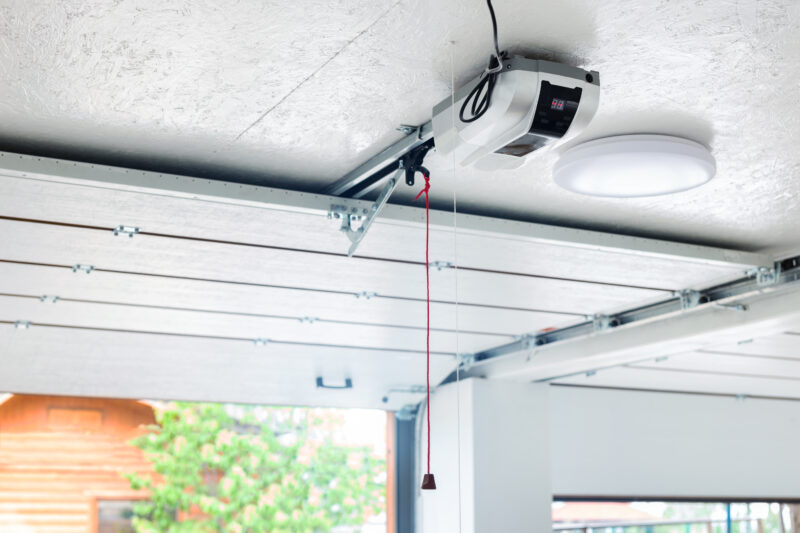Garage Door Installation
The task of garage door installation, while apparently straightforward, contains multiple complexities that can significantly impact the security and convenience of your property.
As we embark on this comprehensive exploration of the process, we will discuss various aspects, from the careful selection of a suitable door to understanding the nuances of its installation.
We will also examine the potential pitfalls of attempting such installations without professional help, and the benefits that experienced installers bring to the table.
Furthermore, we will touch upon the latest innovations in the field, including smart garage door systems, and the maintenance protocols necessary for ensuring their longevity.
As you navigate this journey through the realm of garage door installations, be prepared to discover insights that will empower you to make decisions that are both secure and practical for your unique situation.
Garage Door Installation
Installing a new garage door can greatly enhance your home’s security, appearance, and energy efficiency.
However, the importance of professional installation cannot be overstated, as it guarantees the door’s optimal operation and longevity.
Let us explore why this investment is crucial and the value that professional installation brings to the entire process.
Why replace or install a garage door
Considering a new garage door installation can substantially elevate the curb appeal and reliability of your home, while also presenting an opportunity for enhanced security through energy-efficient and affordable options.
A new garage door can add value to your property and provide robust protection for your vehicles and belongings. Replacing an old garage door can significantly improve the functionality and safety of your garage space.
Furthermore, installing a new garage door gives you the chance to customize your home’s aesthetics. Whether your garage door needs are driven by style, security or efficiency, opting to replace your garage door can be a wise investment, offering numerous benefits and improvements to your home.
The importance of professional garage door installation
Why entrust your garage door installation to professionals? Professional garage door companies bring expertise, quality, and safety to the table. Here are three reasons why it’s essential:
- Quality Assurance: A professional garage door installation guarantees proper alignment and functionality, prolonging the lifespan of your new door.
- Safety: Incorrect installation can lead to safety hazards. Professionals have the expertise to handle complex installations, ensuring a seamless and reliable setup.
- Warranty and Support: Professional installations often come with warranty coverage and after-sales support, providing peace of mind against future issues.
Our Garage Door Installation Process
At this stage of our discussion on ‘Garage Door Installation’, we turn our attention to ‘Our Garage Door Installation Process’.
Our focus will be on providing a comprehensive, step-by-step guide to our proven installation procedure.
Additionally, we will highlight the unique benefits you can expect when choosing our experienced team for your garage door installation needs.
Step-by-step guide to a successful installation
Our meticulous garage door installation process begins with the preparation of all necessary tools and materials, ensuring a smooth and efficient installation experience. This step-by-step guide is designed to ensure a successful installation of your garage door system.
- Careful Measurement: Before the garage door installation, we undertake a thorough assessment of the space to ensure the correct fit for the new garage door.
- Adherence to Guidelines: We strictly follow the manufacturer’s instructions, which provide a comprehensive step-by-step guide to the installation process, guaranteeing the system’s optimal operation.
- Rigorous Testing: Following the installation, we conduct a comprehensive testing of the garage door and its components, ensuring the successful installation and functionality of your garage door system.
With this process, we ensure a seamless and efficient installation.
The benefits of working with our team
Choosing to work with our team for your garage door installation needs presents several significant benefits.
Firstly, we offer time efficiency. Our team is dedicated to ensuring a smooth and efficient garage door service, providing you with expert knowledge and experience. This leads to high-quality and reliable installations of new garage doors.
Secondly, we provide professional expertise. Our team has the necessary skills and qualifications to handle any garage door installation. We stay up to date with the latest industry trends and techniques, ensuring that we can offer you the best solutions for your specific needs.
Thirdly, we offer a wide range of choices. Our extensive selection includes energy-efficient and affordable garage doors, giving you the flexibility to find the perfect solution that fits your needs and budget.
Lastly, we are committed to customer satisfaction. We prioritize your happiness and guarantee our work. You can trust that we will go above and beyond to ensure that you are completely satisfied with the installation process and the end result.
With our same-day service, we aim to minimize any disruption to your daily routine. You can rely on us to complete the installation efficiently and effectively, allowing you to enjoy your new garage door as soon as possible.
Custom Garage Door Installation
Custom garage door installation offers a unique opportunity to enhance both the functionality and aesthetic appeal of your home. This process involves tailoring a garage door to your specific needs and preferences, from design to installation.
Let’s explore the compelling benefits of this approach and outline our meticulous process for delivering a personalized solution.
The benefits of a customized garage door
Enhancing the aesthetic appeal of your home, a customized garage door instills a unique charm with its tailored design that complements your architectural style and personal preferences.
- Personalization: A customized garage door offers the flexibility to choose from a wide array of garage door brands and materials. It allows you to select the right style door, color, and finish that reflect your individual taste and vision.
- Enhanced Value: Custom garage doors add value to your property, setting your home apart and making a lasting impression in your neighborhood.
- Advanced Features: Customization offers the opportunity to incorporate advanced security features and energy-efficient options into your garage-door, ensuring both style and functionality.
Our design and installation process
When it comes to installing a garage door that is both functional and aesthetically pleasing, our personalized design and installation process is an essential part of achieving the desired outcome. We start with an individual consultation to understand your specific needs. This includes your preference for a single or double garage door.
Our team then develops a custom design plan to match your requirements and unique style. The local garage door installation is carried out by our skilled technicians ensuring precision and quality. The process ends with a thorough inspection to guarantee your satisfaction.
| Consultation |
Design |
Installation |
| Understand client needs |
Develop custom plan |
Execute by skilled technicians |
| Single or double garage door |
Match client style |
Ensure precision |
| Local garage door services |
Garage door installation |
Thorough inspection |
Types of Garage Doors We Install
As part of our comprehensive garage door installation services, we offer a variety of door types to cater to diverse homeowner preferences and needs. These include wood, steel, aluminum, and glass garage doors, each presenting unique benefits and design aesthetics.
In the following section, we will provide detailed information about these different garage door types, highlighting their features and potential advantages for your home.
Wood garage doors
Offering a blend of classic aesthetics and natural beauty, wood garage doors serve as a durable, customizable, and energy-efficient option for homeowners seeking to enhance their home’s curb appeal. As a reputable provider of home services, we specialize in the installation and garage door repair of these timeless structures.
- Customizability: Wood garage doors can be tailored to match your home’s architecture and your personal design preferences. Whether you want to replace an old door or install an automatic garage door, we’ve got you covered.
- Durability: Being naturally robust, wood garage doors withstand harsh weather conditions and last for years with proper care.
- Energy Efficiency: Wood acts as a natural insulator, keeping your garage warm in winter and cool in summer, thus reducing energy costs.
Choose wood garage doors for an appealing and practical solution.
Steel garage doors
Embodying durability and low-maintenance, steel garage doors present a robust solution for residential needs, providing enhanced security and bolstering the aesthetic appeal of your home. With their inherent strength, these doors resist denting and warping, ensuring a long-lasting performance.
The torsion spring mechanism enhances the door’s operational efficiency, reducing the strain on the garage door opener. Moreover, steel garage doors are adaptable to both single and double door configurations, and can be easily installed on old tracks. Available in a variety of designs, they can seamlessly blend with your home’s architecture.
Additionally, their superior insulation properties contribute to energy efficiency. Trust your steel garage door installation to professionals for an immaculate finish and optimum functionality.
Aluminum garage doors
While steel garage doors offer robust security and durability, another excellent option to consider for your residential needs is the aluminum garage door, known for its sleek modern appearance and outstanding durability.
Equally crucial to the aesthetic appeal of aluminum garage doors are their functional benefits. Here are three major advantages:
- Lightweight and Durable: Aluminum is lighter than steel, reducing strain on garage door openers and overhead door mechanisms, thus minimizing the chances of a broken garage door.
- Rust-Resistant: Unlike steel, aluminum doesn’t rust, ensuring a longer lifespan with regular maintenance.
- Variety of Styles: Aluminum doors come in various finishes and designs, including options with frosted glass panels, offering a modern touch to any home.
Consider aluminum garage doors for a contemporary, durable, and low-maintenance solution.
Glass garage doors
For homeowners seeking to infuse their property with a touch of contemporary elegance, glass garage doors present a compelling option, combining both style and functionality.
Our garage door installation service ensures that these doors, built with sturdy containment cables, add aesthetic appeal while performing their primary function effectively.
The top section of these doors is designed to allow natural light to flood into your garage, creating a bright and inviting atmosphere.
With a variety of styles available, including full-view, frosted, and tinted options, glass garage doors can be tailored to perfectly suit your taste and the architectural design of your home.
Trust our professional installation process to seamlessly integrate a glass garage door into your property, enhancing its curb appeal and value.



